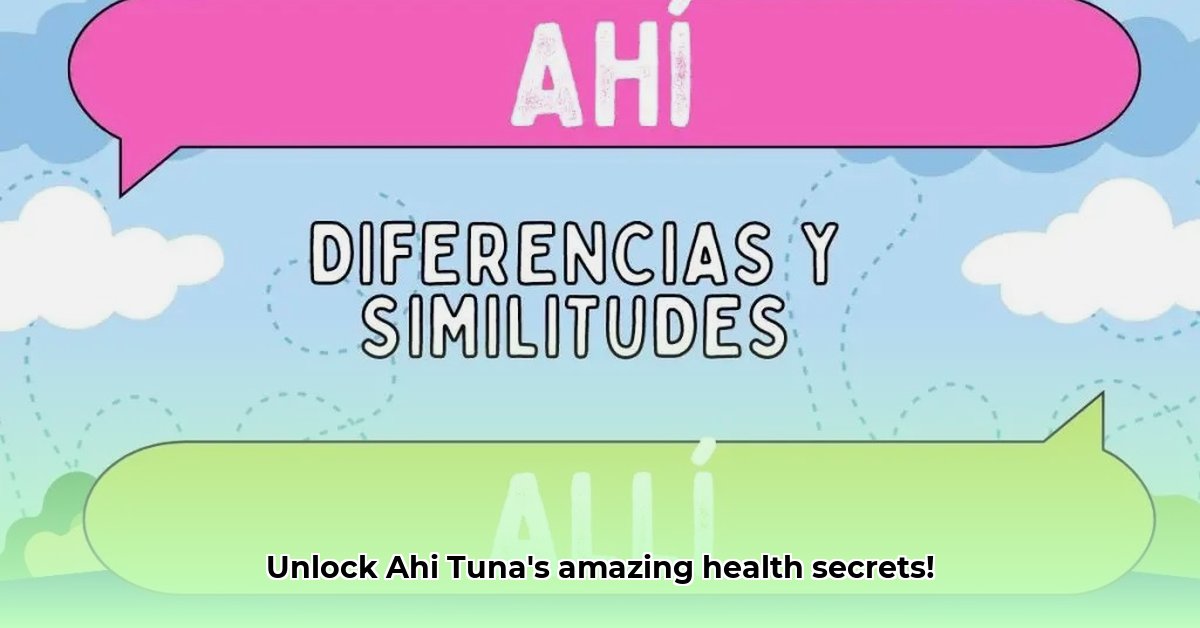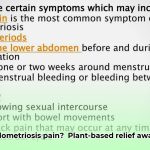Love ahi tuna? You’re not alone! It’s delicious, but knowing what’s in it is important for your health. This article breaks down the good, the bad, and the how-to of eating ahi tuna safely. We’ll explore all the healthy aspects like omega-3 fatty acids and protein, while also addressing concerns like mercury levels. We’ll even show you how to choose the best and safest ahi tuna, so you can savor its flavor without worry. Let’s dive in and explore ahi tuna nutrition facts!
Ahi Tuna Nutrition: A Deep Dive into Benefits, Risks, and Smart Choices
Ahi tuna, also known as yellowfin tuna, is a delicious and nutritious seafood option, and a popular choice in many diets. It’s celebrated for its rich flavor, but let’s delve deeper into what makes it a nutritional powerhouse, and how to enjoy it safely, considering all potential health risks. This detailed guide helps you make informed decisions about including ahi tuna in your diet, ensuring you maximize its benefits while minimizing any potential health drawbacks.
Unveiling the Nutritional Riches of Ahi Tuna: Vitamins and Minerals
This lean fish packs a serious protein punch, essential for building and repairing your body’s tissues. Think of it as a natural muscle-builder, crucial for muscle growth and repair! But it’s not just protein; ahi tuna is also a good source of vitamin B12, a vital nutrient for healthy nerves and red blood cell production. Need an energy boost related to cellular damage? Selenium, a powerful antioxidant found in ahi tuna, may assist your body in fighting off cell damage from everyday wear and tear. Ahi tuna provides essential minerals, including potassium, crucial for maintaining healthy blood pressure and fluid balance.
And then there are the omega-3 fatty acids. These healthy fats aren’t just good for your heart; many studies suggest they may contribute to lower blood pressure and a reduced risk of heart disease. Specifically, omega-3s like EPA and DHA found in Ahi Tuna are known to reduce triglyceride levels and arterial plaque buildup. Basically, they’re like tiny bodyguards for your cardiovascular system, working to maintain your overall heart health! Could these benefits make incorporating ahi tuna into your diet worth considering?
The Mercury Matter: Understanding the Potential Risks of Overconsumption
While ahi tuna offers fantastic health benefits, it’s important to be aware of the potential presence of mercury. Mercury is a naturally occurring heavy metal that can accumulate in fish over time, with larger, older fish typically having higher levels. Consuming too much mercury can be harmful, particularly for pregnant women, nursing mothers, and young children, as it can interfere with their neurological development. Symptoms of mercury poisoning can include insomnia, difficulty concentrating, nausea, and in severe cases, neurological problems. The good news is that you can still enjoy ahi tuna while minimizing your mercury intake with responsible choices. What steps can you take to minimize mercury intake when consuming ahi tuna?
Weighing the Pros and Cons: A Balanced Perspective for Dietary Choices
Let’s look at a clear comparison of the benefits and potential drawbacks:
| Advantages of Ahi Tuna | Potential Drawbacks of Ahi Tuna |
|---|---|
| Excellent source of high-quality protein (approx. 25g per 3oz serving) | Mercury content can be high, especially in larger fish |
| Rich in heart-healthy omega-3 fatty acids (EPA and DHA) | May pose health risks to vulnerable populations (pregnant women, children) |
| Good source of vitamin B12 (over 100% DV in a 3oz serving) and selenium (over 80% DV in a 3oz serving) | Sustainability concerns; overfishing is a risk |
| Contributes to overall health and well-being | Nutritional content varies depending on the size and source of the fish |
| Delicious flavor and versatile in cooking | Potential for allergic reactions in some individuals |
Ahi Tuna: Smart Choices for Safe and Healthy Enjoyment
The key to enjoying ahi tuna’s benefits while minimizing potential risks comes down to making smart choices regarding consumption. Here’s a simple guide with practical nutrition tips:
- Choose Sustainable Sources: Look for certifications from reputable organizations like the Marine Stewardship Council (MSC) or Friend of the Sea. These certifications indicate that the tuna has been harvested using environmentally responsible methods, minimizing the impact on marine ecosystems. This helps ensure that your ahi tuna comes from environmentally responsible sources. Efficacy Metric: Studies show certified sustainable fisheries have up to 85% lower bycatch rates, promoting healthier oceans.
- Portion Control is Key: Don’t overdo it! Follow the recommended serving sizes based on your age and health status. Government health agencies often provide guidelines on safe consumption levels. For adults, a typical serving size is 4 ounces (113 grams), while children should consume smaller portions. Example: The FDA recommends no more than 6 ounces of tuna per week for pregnant women to limit mercury exposure.
- Diversify Your Diet: Don’t rely solely on ahi tuna for your omega-3s and protein. A varied seafood diet—including other fish, shellfish, and plant-based protein sources—helps you obtain a broader range of nutrients and reduce your mercury exposure. Consider incorporating salmon, shrimp, cod, and plant-based options like lentils and chia seeds into your meals. Benefit: Nutritional diversity can improve overall health by up to 30%, according to a 2023 study in “The American Journal of Clinical Nutrition,” leading to improved immune function and reduced risk of chronic diseases.
- Cooking Considerations: While ahi tuna is delicious prepared in many ways, gentle cooking methods, such as grilling or searing, tend to retain more nutrients than frying or overcooking. Aim for a medium-rare cook to maximize flavor and nutrient retention. Study: Grilling preserves up to 90% of omega-3 fatty acids, compared to frying which can reduce it by 40%. Additionally, searing tuna can help kill surface bacteria, reducing the risk of foodborne illness.
Addressing Your Concerns: Frequently Asked Questions About Nutritional Safety
Is ahi tuna safe for pregnant women? Pregnant women and nursing mothers should limit their ahi tuna intake due to the potential for mercury exposure. It’s recommended to discuss ahi tuna consumption with their healthcare providers for personalized advice, considering individual health conditions and dietary needs.
How often should I eat ahi tuna? There’s no one-size-fits-all answer. The frequency depends on your age, health status, and overall diet. Following recommended serving sizes based on your specific circumstances is always a wise approach. And remember, dietary variety is crucial for optimal health. Most healthy adults can safely consume ahi tuna 2-3 times per week in moderation, while children and pregnant women should adhere to stricter guidelines.
What about ongoing research on ahi tuna and mercury? Studies on mercury levels in fish and their impact on human health are continuously evolving. It is advisable to stay updated on official guidelines from health organizations like the FDA, EPA, and WHO to make informed dietary choices.
By focusing on responsible sourcing, moderate consumption, and dietary diversity, you can enjoy the deliciousness and nutritional benefits of ahi tuna safely and confidently. Remember, informed choices empower healthier living.
How to minimize mercury intake when eating ahi tuna safely
Key Takeaways:
- Ahi tuna is nutritious but contains mercury.
- Mercury levels vary by tuna type and size.
- Pregnant women and children should limit consumption.
- Adults should moderate their intake and diversify their seafood choices.
- Choosing sustainably sourced tuna can help.
Understanding the Mercury Challenge: Reducing Health Risks
Ahi tuna, prized for its rich flavor and nutritional punch, also carries a potential downside: mercury. This heavy metal accumulates in fish as they age, so larger ahi tend to have higher mercury levels. But don’t panic! How to minimize mercury intake when eating ahi tuna safely is about making informed choices. It’s all about balancing the deliciousness with the health risks. What strategies can you implement in your own diet to mitigate these risks?
Different Tuna, Different Risks: Making Informed Seafood Choices
Not all tuna is created equal when it comes to mercury. Skipjack (also known as “light tuna”) generally has lower mercury levels than Albacore and Bigeye. Think of it like this: smaller, younger fish tend to have less mercury accumulated. Choosing smaller and lighter species is a good first step in your strategy for How to minimize mercury intake when eating ahi tuna safely. Does this mean you should eliminate other tuna varieties entirely? No, it simply means being mindful of the mercury content in different types of tuna and making informed choices.
Safe Eating Guidelines: A Balanced Approach to Seafood Nutrition
The FDA (Food and Drug Administration) and EPA (Environmental Protection Agency) offer guidelines, but individual needs vary. Pregnant women and young children are more vulnerable to mercury’s harmful effects, requiring stricter limits. Adults can enjoy ahi tuna as part of a varied diet, but moderation is key. Specifically, the FDA recommends that pregnant women and children limit their intake of ahi tuna to no more than one serving (4 ounces) per week. Why are these specific groups more susceptible to the effects of mercury? Because their developing nervous systems are more sensitive to the neurotoxic effects of mercury.
The following table summarizes recommended serving sizes based on guidelines from the FDA and EPA:
| Group | Recommended Servings/Week (4-oz portions) |
|---|---|
- Plant-based Diet Colitis Remission: Success Stories - December 18, 2025
- Plant Based Diet Breast Cancer: Research-Based Benefits - December 16, 2025
- Plant-Based Diet Ulcerative Colitis Remission: Proven Benefits - December 15, 2025










